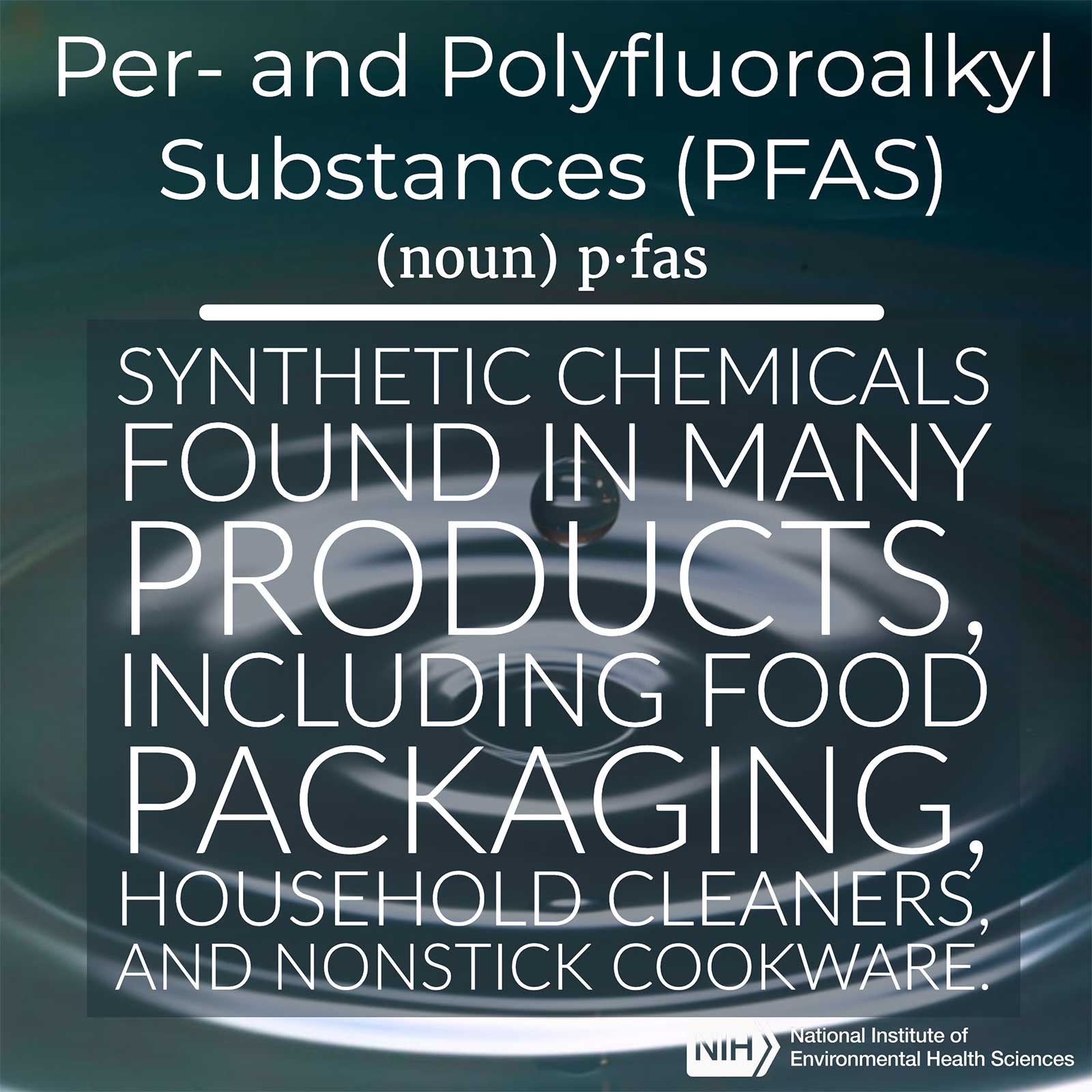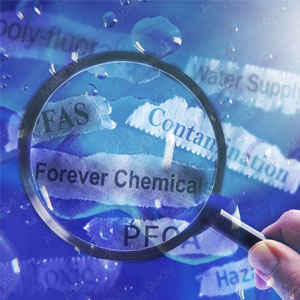Three NIEHS grantees presented their latest research on per- and polyfluoroalkyl substances, or PFAS, at a July 31 Federal Information Exchange. The online session — attended by more than 260 researchers with federal funding, federal employees, and state health representatives — was the first in a series of virtual workshops.
This forum for sharing current knowledge on PFAS and defining research gaps builds on an in-person meeting held at the National Institutes of Health in February 2018. PFAS are a large group of manufactured chemicals and substances that make everyday products more resistant to stains, grease, and water. The chemicals have known human health effects, but many questions remain unanswered.
 Weis brings to NIEHS his experience working in the fields of rapid exposure and risk evaluation for environmental forensics and emergencies. (Photo courtesy of Steve McCaw)
Weis brings to NIEHS his experience working in the fields of rapid exposure and risk evaluation for environmental forensics and emergencies. (Photo courtesy of Steve McCaw)“The objective here is to have open communication among academics and federal and state folks on the front line of trying to solve this problem” said workshop organizer Christopher Weis, Ph.D., NIEHS toxicology liaison. “Working together is not only useful, it’s essential.”
PFAS and the placenta
Postdoctoral researcher Jacqueline Bangma, Ph.D., from the University of North Carolina at Chapel Hill, kicked off the workshop by sharing her work on how PFAS interact with the placenta.
Bangma works on a cell type known as a placental trophoblast, which supplies the embryo with nourishment in early pregnancy. Later on, these cells form the major part of the placenta. Bangma exposed human placental trophoblast cells to varying levels of GenX for 24 hours. GenX is a PFAS used in commercial items like Teflon coatings cookware.
Bangma compared gene activity changes in the exposed trophoblasts to better understand genetic effects. “Thirty-two of the 96 genes we looked at exhibited significant gene expression changes in at least one treatment,” she explained.
She also observed important changes in syncytialization-related genes, which help form the barrier between a woman and her developing child. This study, still in its early stages, offers insights into directions scientists can take when researching prenatal impacts of PFAS exposures.
Using models to simplify reality
University of Pittsburgh engineer Carla Ng, Ph.D., uses computational modeling, including a method called molecular dynamics, to understand the differences among various PFAS in their effects across species. These models can bolster laboratory research.
“No one approach holds the answer. The key is to integrate multiple lines of evidence and see where the strongest agreements are found,” said Ng, highlighting the benefits of more collaborations between modelers and bench researchers.
 PFAS are found in many everyday products. GenX, a short chain PFAS, is one of the chemicals found in nonstick coatings.
PFAS are found in many everyday products. GenX, a short chain PFAS, is one of the chemicals found in nonstick coatings.Her team collaborated with U.S. Environmental Protection Agency researchers who created a tool called SeqAPASS. By comparing the amino acid sequence in the protein of one species to similar proteins in other species, researchers can use SeqAPASS to extrapolate toxicity information across species.
Coupled with knowledge of where in a cell a chemical might interact, researchers can use these simulation tools to predict similarities and differences in effects of exposure. The predictions can be tested experimentally to discover which species may be at greatest risk.
Liver is a PFAS target
“We know some of the health effects of PFAS include increased serum cholesterol and increased markers of liver damage,” said Angela Slitt, Ph.D., from the University of Rhode Island. “[The PFAS] that have been regulated are associated with slight elevation of serum liver enzymes.”
Slitt’s work investigates the link between PFAS exposure and nonalcoholic fatty liver disease, a condition in which excess fat is stored in the liver (see sidebar). Her team compared genetic effects on human liver cells of different PFAS of varying concentrations and looked for gene expression changes and lipid accumulation.
Certain novel PFAS are replacing legacy PFAS, such as those known as PFOA and PFOS. Those two are no longer in production but continue to contribute to exposures. Slitt’s results suggest that only select novel PFAS caused fat accumulation in the liver, and these novel PFAS also more strongly influenced gene expression changes in the test cells.
“We found that even environmentally relevant concentrations of PFAS exposure have the capacity to induce gene expression,” said Slitt.
(Sheena Scruggs, Ph.D., is a digital outreach coordinator in the NIEHS Office of Communications and Public Liaison.)










